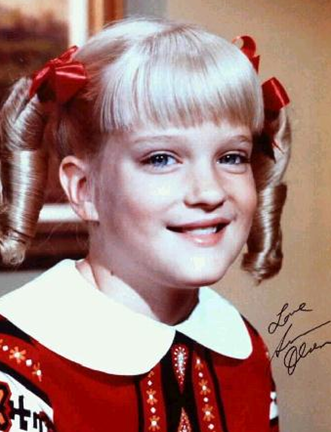Lisping
The most common form of a speech impediment is a lisp, also known as sigmatism. Although there are various types of lisping, most of us think of those lispers who have trouble with sibilants (like "s"), replacing them with interdentals, such as the voicelss interdental fricative "th".
- "Interdental" lisping: when the tip of the tongue protrudes between the front teeth
- "Dentalised" lisping: when the tip of the tongue just touches the front teeth.
- "Lateral" lisping (slushy lisp): where the "s" and "z" sounds are produced with air escaping over the sides of the tongue. (Guliani)

- "Palatal lisping": when the tongue touches the palate.

More Famous Lispers
  
Lisping Children
Patricia McAleer-Hamaguchi gives advice to mothers worried about their childrens’ lisps. She encourages seeing a speech-language pathologist if the lisp is still present at age seven. She says that talking to the child about their speech impediment could hurt their feelings or lower their self-esteem. Instead, all mothers can do is to treat any allergies, keep their hands and fingers out of their mouths, and to use a straw so has to not put pressure on the teeth when drinking. (See http://www.babycenter.com/404_can-i-help-correct-my-childs-lisp_71658.bc)
From
http://members.tripod.com/caroline_bowen/lisping.html
Bowen, C. (1999). Lisping: When /s/ and /z/ are hard to say. Retrieved from http://www.speech-language-therapy.com/lisping.html
Lisping is called a functional speech disorder. Most speech disorders or difficulties present themselves in children who are just learning to speak. Some disorders may just be a result of the child learning the wrong pronunciation of a word or sound. Others, more serious, may lead to a learning disability. If this is the case, the child might be more associated with developmental phonological disorders, which has to do with language instead of speech. A child can have both of these disorders together.
Have you ever talked to a person with a lisp? Well if you have, have you watched their mouth and tongue? You will definitely see their tongue more than if they did not have a lisp. When saying the “s” or “z sound, they will either put their tongue in between their front teeth (this is called “interdental production”), or they will push it against the back of their top teeth (this is called “dentalised production”). There are four different kinds of lisps: the lateral, where the air escapes over the sides of the tongue, the palatal, where the tongue is touching the palate, the interdental, and the dentalised.
You might be thinking . . . “All of my children have had lisps,” or “My child has a lisp right now. Is that normal?” Children under the age of five years who have a lisp are not to be worried about. If the speech problem persists past that age, a visit to a speech-language pathologist is recommended. It is estimated more likely for children to grow out of interdental or dentalised lisps than lateral or palatal. Adults with lisps have either never had speech therapy or quit going as a child. With help from a speech pathologist, they can normalize their speech.
|






